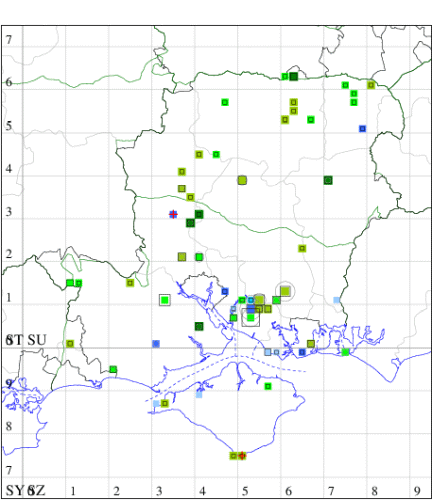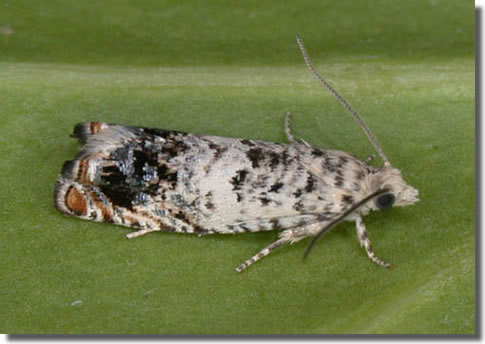Epinotia subocellana
Checklist Number49.244 [B&F: 1132]
Verification
Record will normally be accepted but photo evidence may be required - check with CMR if not sure of identity
Classification
| Family: | Tortricidae |
| Subfamily: | Olethreutinae |
| Genus: | Epinotia |
| Species: | subocellana |
| Authority: | (Donovan, 1806) |
Common in deciduous woodland and damp areas throughout much of the British Isles. In Hampshire formerly widespread and common, but in recent years barely annual, most frequently recorded in the south-east of the county and very erratic in appearance in the north and on the Isle of Wight. Wingspan 10-14 mm. Characterised by the comparatively clear cream-white antemedian band of ground colour which contrasts with the large metallic blue-grey ocellar patch and ferruginous apical area [Bradley]. Larva feeds on Sallow, living between leaves spun together with silk, over-wintering in a cocoon.


The abundance in each month is indicated as follows:
 No records
No records Very occasional
Very occasional Irregular
Irregular Uncommon
Uncommon Off-peak, but not unusual
Off-peak, but not unusual Off-peak, but not unusual
Off-peak, but not unusual Main flight time
Main flight time| J | F | M | A | M | J | J | A | S | O | N | D | |
|---|---|---|---|---|---|---|---|---|---|---|---|---|
| Adult |  |  |  |  |  |  |  |  |  |  |  |  |
| Larval |  |  |  |  |  |  |  |  |  |  |  |  |



